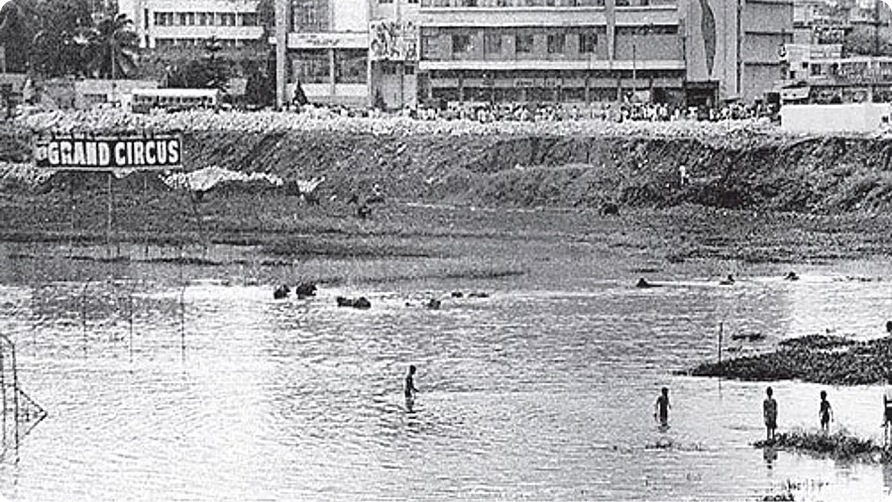
From Mud Forts to Metropolis: Bengaluru Through Kempe Gowda’s Eyes 💭
Bengaluru is a city of many hearts, alive in sudden rain showers, voices that mingle across languages, and a rhythm that lingers in unhurried metro rides, the cool evening breeze, and the lush green trees that have watched generations grow. This blog gathers these moments to celebrate the Bengaluru that has always felt like home.
From Mud Forts to Metropolis: Bengaluru Through Kempe Gowda’s Eyes
In the 16th century, much of southern India was dotted with small towns and agrarian settlements. But beyond these bustling centres lay a rugged stretch of land - uneven, untamed, and almost empty. No lakes glimmered in the sun, and no trees offered shade. And yet, this barren land breathed with possibility. Its soil was fertile, its rains reliable, and its breeze gentle.
It was upon this promising land that the Yelahanka Nadu chieftains, the lineage of Kempe Gowda, chose to settle. From here, their family would go on to shape the destiny of an entire city. Many believe Bengaluru’s story began in the Pete area. However, the true beginning lies further north, in Yelahanka, once known as Yelahanka Nadu.

As the Yelahanka Nadu chieftains grew in power, Kempananje Gowda rose to prominence under the Vijayanagara Empire. His son, Kempe Gowda I, would go on to envision not just a fortified town, but a living, breathing city.
But before he began, his mother offered him a piece of wisdom that would shape Bengaluru’s destiny:
“Keregalam kattu, marangalam nedu” - Build lakes, plant trees.
Guided by her advice, Kempe Gowda imagined a city that grew in harmony with the earth - lakes to hold the rain, trees for shade, markets open to all communities, and a fort that protected the people who lived there.

One of the four watch towers buillt by Kempe Gowda at Mekhri Circle.
He marked the city’s boundaries with four watchtowers. These towers still stand today at Lalbagh, Kempambudhi, Ulsoor, and Mekhri Circle, marking the boundaries of the old Bengaluru. He had imagined tanks to store water and planned roads that met at a central marketplace, the first blueprint of what would one day become Bengaluru.
Kempegowda wasn’t content with the pete markets alone. He knew that for a city to endure, it needed water for both people and fields. Under his direction, workers dug tanks and lakes, among them Kempambudhi Lake and Dharmambudi Lake (where the Majestic bus stand now stands), designed to collect and store monsoon rain. These water bodies fed the city and cooled its air, a network so well-planned that Bengaluru’s lakes would sustain its growth for centuries and keep the city cool.

Dharmambudi Lake, currently the Kempe Gowda Bus Stand at Majestic.
He also fostered citizens’ spiritual lives by restoring temples like Someshwara, Basavanna, and Gavi Gangadhareshwara. These served as vital worship and gathering spaces, uniting the expanding town.
Centuries later, Bengaluru has become a global hub of technology and innovation, but the map of the old Pete area still follows Kempegowda’s plan. The lakes he dug, though many are now reclaimed, once fed the city’s tanks and gardens. His name is remembered in every direction: Kempegowda International Airport, Majestic Bus Stand, Kempegowda Metro, and a towering 108-foot bronze statue that greets travellers at the airport.
Five hundred years ago, he was simply a chieftain with a dream of transforming open land into a thriving city. Today, as Bengaluru races skyward, the echoes of that dream remain in its streets, its water, and its spirit.
Do you carry a story of Bengaluru?
Every city has its legends, its hidden corners, and its forgotten tales. Bengaluru is no different. Beyond the glass towers and traffic, stories live in lanes, old houses, and memories at the dinner table.
We’d love to hear the rare story of Bengaluru through a personal memory that reveals a hidden side of the city.
Share it with us at our Google Forms link. These stories, no matter how small, are the threads that hold Bengaluru together.






